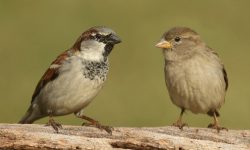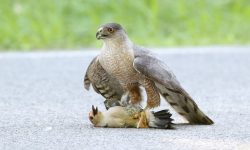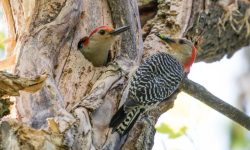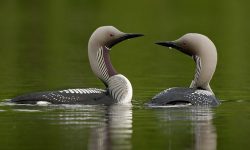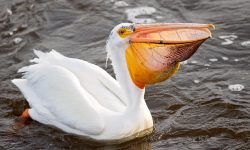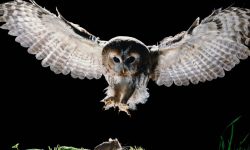Hummingbirds are among the most fascinating creatures in the avian world. With their iridescent feathers and rapid wingbeats, they are a wonder to watch in any garden. But what truly keeps these tiny dynamos going is their remarkable diet. So, what do hummingbirds like to eat the most? The answer lies in a mix of high-energy nectar, protein-rich insects, and seasonal plant foods.
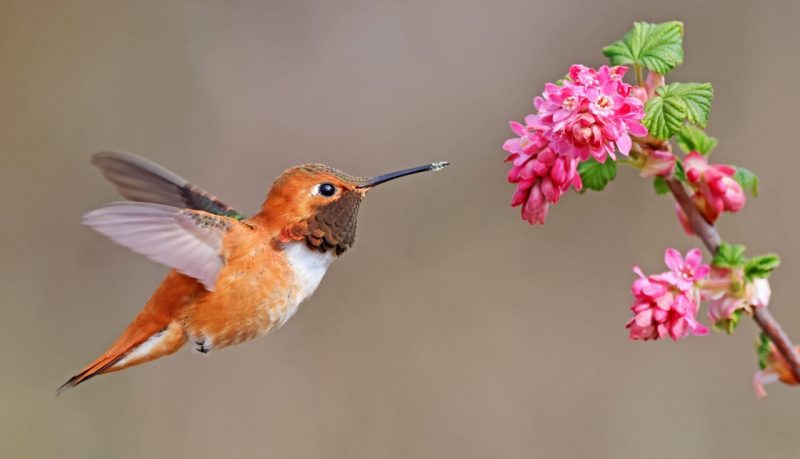
Nectar: The Primary Energy Source
Flower Nectar in the Wild
At the heart of a hummingbird’s high-octane lifestyle is nectar—a sugary secretion produced by flowering plants specifically to lure pollinators. For hummingbirds, nectar is not merely a sweet treat but a critical fuel source that powers their astonishing metabolic engine. These birds burn energy at a rate unmatched in the avian world, with wingbeats exceeding 50 flaps per second and heart rates that can soar past 1,200 beats per minute. Such intense activity demands a near-constant intake of simple sugars, and nectar delivers just that.
To harvest nectar efficiently, hummingbirds have evolved a suite of specialized adaptations. Their long, needle-like bills grant access to the deep corolla tubes of flowers, while their forked, grooved tongues rapidly extend and retract up to 13 times per second. Capillary action and a rapid licking motion draw nectar into the mouth, making every second of feeding highly efficient.
In the wild, hummingbirds show a preference for tubular, brightly colored flowers, particularly in red, orange, and pink hues—colors less attractive to bees, reducing competition. Favorite nectar sources include trumpet creeper (Campsis radicans), bee balm (Monarda spp.), honeysuckle (Lonicera spp.), salvia, and columbine. These blooms not only produce high-sucrose nectar but are also structured to accommodate a hovering bird’s feeding posture, offering both nutritional and ergonomic benefits.
Artificial Nectar in Feeders
For many people, providing hummingbirds with access to artificial nectar via feeders is both a joy and a lifeline for the birds—especially in times or areas where natural flowers are scarce. The recommended mixture of four parts boiled water to one part white granulated sugar closely resembles the sucrose levels found in natural floral nectar. This blend delivers the quick-access energy hummingbirds need to sustain flight and stay warm, particularly during early mornings or cool nights.
It’s important to avoid using honey, brown sugar, or artificial sweeteners, as these can ferment quickly, harbor harmful microbes, or lack the proper nutrient profile. Likewise, red food dye is unnecessary and potentially toxic. Most feeders are already colored to attract hummingbirds without added chemicals.
During migration seasons—spring and fall—feeders become essential rest stops for birds undertaking journeys of hundreds to thousands of miles, including nonstop flights across the Gulf of Mexico. In these periods of heightened energy demand, feeders may literally mean the difference between life and death.
To ensure feeders remain beneficial rather than harmful, they must be cleaned at least every 3–5 days in cool weather and more frequently in hot, humid conditions. Moldy or fermented nectar can sicken hummingbirds, damaging their digestive systems or leading to fatal infections.
By mimicking nature and maintaining clean, well-placed feeders, humans can offer critical support to these dazzling, nectar-fueled aviators as they brighten gardens and skies alike.
Insects and Spiders: The Hidden Protein
Why Hummingbirds Eat Insects
Though nectar is the primary fuel that powers a hummingbird’s rapid wingbeats and relentless energy, it lacks the full range of nutrients necessary for survival. Hummingbirds require more than sugar—they also need proteins, lipids, amino acids, and trace minerals, especially during growth, molting, reproduction, and for immune function. This is where insects and spiders enter the equation.
Protein intake is especially critical for females building eggs and for nestlings, whose developing tissues demand a dense supply of nitrogen-rich compounds. In fact, newly hatched hummingbirds are fed almost exclusively on soft-bodied arthropods, as their growing bodies cannot survive on sugar alone. Even adult hummingbirds supplement their nectar diet with regular catches of insects to maintain muscle mass and metabolic health.
What Kinds of Insects They Eat
Hummingbirds are agile aerial predators and opportunistic gleaners, capable of catching a diverse array of small, soft-bodied arthropods. Using their sharp eyesight and acrobatic flight, they chase down tiny insects in midair—often in the form of fruit flies, gnats, and mosquitoes. In other cases, they carefully probe leaves, bark crevices, or spiderwebs to pick off stationary prey such as aphids, mites, and small beetles.
Spiderlings and even adult spiders are also consumed, particularly by nesting females who seek out high-protein meals for their chicks. Remarkably, some hummingbirds have been observed raiding spider webs not only for prey but also for web silk, which they use in constructing their own elastic, camouflaged nests. While stealing trapped insects, they may eat any still-living victims along with the web material itself.
This dietary flexibility gives hummingbirds access to both fast energy from nectar and long-term nutritional support from arthropods, making them surprisingly well-rounded feeders. Their ability to shift between these food sources helps them adapt to varying environmental conditions, whether it’s a flower-scarce early spring or an insect-rich wet season.
Tree Sap: A Secondary Sugar Source
When winter loosens its grip and spring has yet to fully awaken the flowers, hummingbirds in colder climates face a temporary nutritional gap. During this critical transition, certain species—particularly those in North America—turn to an unlikely but lifesaving food source: tree sap. While hummingbirds lack the ability to pierce bark on their own, they cleverly capitalize on the work of another forest resident—the Yellow-bellied Sapsucker, a type of woodpecker that drills neat, horizontal rows of holes into tree trunks to access the sugary fluids beneath the bark.
These wells slowly ooze sucrose-rich sap, which hummingbirds lap up using the same highly specialized tongues they employ for flower nectar. Their tongues, with brush-tipped ends and a unique capillary action, allow them to efficiently extract the sticky liquid, despite its different texture and composition compared to nectar. Hummingbirds are known to return repeatedly to active sap wells, memorizing their locations and timing their visits with the replenishment of sap flow.
Although sap lacks some of the amino acids and trace nutrients found in nectar, it still offers a reliable carbohydrate boost during periods of low floral abundance. For early migrants or overwintering individuals, sap can serve as a crucial energy bridge, fueling foraging and territorial behavior until spring blossoms open in full.
This opportunistic feeding behavior not only highlights the dietary flexibility of hummingbirds but also reveals their role in a broader ecological network. By visiting sap wells, hummingbirds sometimes share the space with other animals—including insects, bats, and even butterflies—making the tree sap system an unintentional hub of forest activity. In this sense, the hummingbird is not just a nectar specialist but a clever survivor, adapting its sugar cravings to whatever nature can provide.
Pollen and Ash: Trace Nutrients
Though hummingbirds are primarily known for their high-sugar nectar diet and occasional insect intake, they also acquire trace nutrients from less obvious sources—namely pollen and mineral-rich materials like ash or soil. While hummingbirds do not intentionally seek out pollen as a food source, they inevitably ingest small amounts of it while feeding from flowers. As their brush-tipped tongues sweep through nectar chambers, microscopic pollen grains adhere to their tongues and bills and are often swallowed along with the nectar.
This incidental pollen consumption may provide small but important amounts of protein, lipids, and micronutrients, including vitamins and antioxidants. These trace elements, though minor compared to the caloric intake from nectar, can support cellular health, immune function, and tissue maintenance—particularly during periods of rapid growth or recovery from migration.
Even more surprising is the hummingbird’s occasional ingestion of wood ash, clay, or mineral soil, behaviors observed across multiple species in both North and South America. These substances are believed to be consumed for their electrolyte and mineral content, particularly sodium, calcium, and potassium. Nectar and insects are generally low in salts, yet these minerals are crucial for nerve conduction, muscle contraction, and egg formation. Ingesting ash or soil may therefore serve as a form of natural mineral supplementation, especially during the breeding season or in regions with limited access to mineral-rich water.
These overlooked dietary behaviors highlight the nutritional complexity of hummingbird ecology. Despite their tiny size and seemingly specialized feeding habits, hummingbirds exhibit remarkable adaptability—tapping into subtle environmental resources to maintain their high-performance physiology.
Seasonal Shifts in Diet
Breeding and Nesting Season
As spring unfolds and nesting begins, the dietary priorities of hummingbirds shift significantly. While nectar remains vital for energy, the need for protein-rich food intensifies, especially for females rearing young. To meet the demands of egg production and rapid chick development, female hummingbirds focus intently on capturing soft-bodied arthropods.
They exhibit agile and acrobatic hunting behavior—hovering near insect swarms, darting between leaves, or gleaning prey from the undersides of branches with pinpoint accuracy. This phase of the year sees a notable increase in insect consumption, as nestlings require a dense supply of amino acids, fats, and minerals to support accelerated tissue growth, feather formation, and immune development. For several weeks, a mother hummingbird may deliver dozens of insect meals per day to each of her young, often targeting tiny flies, aphids, and spiders.
Migration and Energy Loading
As summer wanes and migration approaches, hummingbirds enter a physiological state known as hyperphagia—a period of intense, compulsive feeding aimed at fattening up for the journey ahead. Nectar once again becomes the dominant fuel source, providing the quick-burning sugars required to synthesize and store energy as fat deposits, primarily along the flanks. These fat stores are critical, acting as the sole fuel for long-distance flights that may span 500 miles or more, such as the nonstop trans-Gulf migration undertaken by Ruby-throated Hummingbirds.
During this pre-migratory phase, both flowering plants and artificial feeders serve as essential refueling stations. Hummingbirds may visit hundreds to over a thousand flowers per day, timing their feeding routes with remarkable precision to maximize caloric intake. Feeders maintained by humans become especially valuable during migration, helping support survival through habitat corridors and urbanized landscapes where natural blooms are scarce.
This seasonal dietary shift—from protein-centric hunting in spring to carbohydrate-heavy fueling in fall—reflects the extraordinary flexibility and efficiency of hummingbird metabolism. It ensures these tiny birds are fully equipped to reproduce, migrate, and return to their breeding grounds year after year, despite the immense energetic costs of their lifestyle.
What Foods to Offer Hummingbirds in Your Garden
Plant Choices
One of the most effective ways to support and attract hummingbirds is by cultivating a garden filled with nectar-rich native plants. These birds are naturally drawn to brightly colored, tubular flowers, especially those in shades of red, orange, and deep purple, which signal high nectar availability. The shape of these blooms is ideally suited for the hummingbird’s long, slender bill and extendable tongue, allowing them to feed efficiently while also pollinating the plant.
Top choices include trumpet vine (Campsis radicans), known for its cascading, fiery-red blooms that produce abundant nectar, and cardinal flower (Lobelia cardinalis), a favorite for its rich red spikes that bloom late into the season. Bee balm (Monarda spp.) offers a double benefit—nectar and insect prey—while red hot poker (Kniphofia) and a variety of salvia and penstemon species provide sequential flowering throughout the warm months, ensuring a consistent food source.
To make your garden truly hummingbird-friendly, avoid the use of pesticides or insecticides, even organic ones. These chemicals can contaminate the small insects and spiders that hummingbirds rely on for protein, especially during nesting. A healthy, pesticide-free garden supports not just nectar feeding but the full nutritional needs of these tiny aerial acrobats.
Feeders
In addition to flowering plants, hummingbird feeders can be a valuable supplement, particularly in early spring and late autumn when natural blooms may be scarce. Feeders should be placed in partially shaded areas, preferably near flowering plants or water features to mimic natural feeding behavior. This encourages regular visits while helping to prevent nectar spoilage due to sun exposure.
Use a simple nectar solution of four parts water to one part plain white granulated sugar, closely mimicking the natural sugar concentration of flower nectar. Avoid using honey, brown sugar, molasses, or artificial sweeteners, all of which can promote harmful bacterial growth or cause digestive problems in hummingbirds. Similarly, skip the red dye—most feeders are already colored to attract birds, and artificial coloring may pose health risks.
Maintaining clean feeders is critical. Nectar left in the heat too long can ferment or grow mold, which may be fatal to hummingbirds. Clean feeders with hot water every few days—more often during summer heat or heavy use.
If your region lies along a migratory flyway, providing feeders during spring and fall migration can offer life-saving energy for birds undertaking grueling nonstop flights. Your garden may serve as an essential stopover, fueling journeys that span continents.
Conclusion: A Diet Built for Speed and Survival
Hummingbirds may seem delicate, but their dietary needs reveal them to be finely tuned biological machines. Their favorite foods—nectar for energy and insects for protein—support a lifestyle of nonstop motion, from rapid hovering to epic migrations.
By understanding what hummingbirds eat and how their diet shifts with the seasons, we can better protect and support these shimmering jewels of the sky. Whether you’re planting native flowers, maintaining clean feeders, or simply observing their darting flights, you’re participating in one of nature’s most dazzling food chains.

